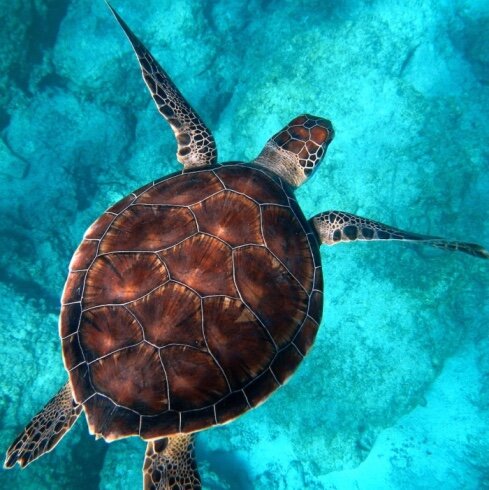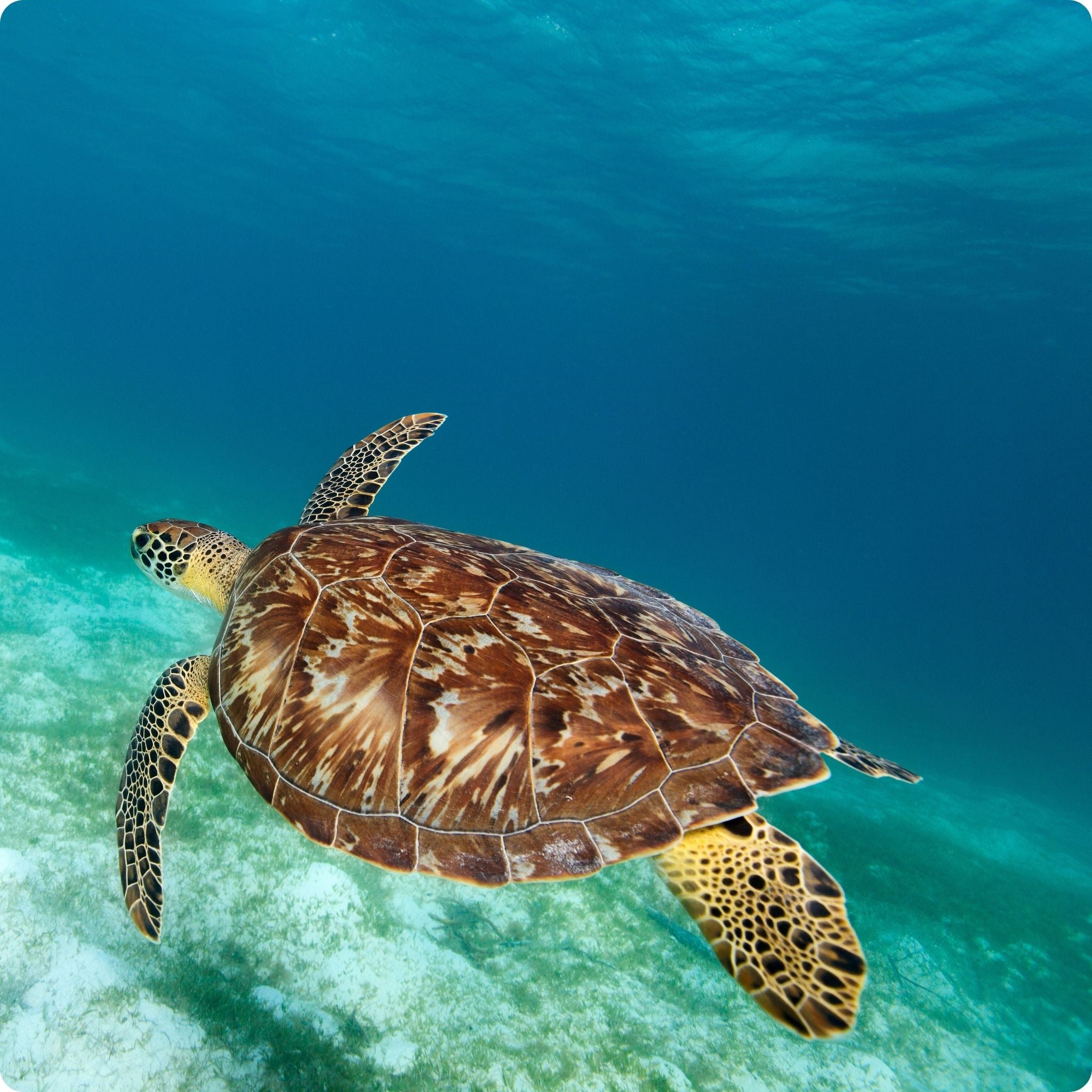
Marine Turtle
Learn all about the seven species of marine turtle with these stunning stats, wow your friends with some amazing turtle facts, learn about the where they live, the many miles that they travel each year and how each species is different. Understand what makes marine turtles so important and why some of the species are under real threat of extinction.
Marine turtles truly are the ocean's great mariners having been on earth for hundreds of millions of years. There are seven species of marine turtle, all are excellent swimmers and cover vast distances as they migrate across the world’s oceans from feeding to nesting grounds. They perform an integral role in maintaining the health of marine and coastal ecosystems. Yet human activity over the last 200 years has tipped the balance and many species are now struggling to survive. Estimates of marine turtle populations are based on the number of egg-laying females and scientists can't be sure of the number of sea-based males and non-egg laying females that are alive.


Where do marine turtles live?
Marine turtles, also known as sea turtles, can be found in all of the world's oceans, as well as some coastal areas.
Different species of marine turtles have specific ranges and habitats that they prefer - such as coral reefs, seagrass beds and rocky shores - but in general, they can be found in warm and temperate waters around the world.
Migration and nesting
Marine turtles make incredibly long journeys between feeding and breeding areas. The turtles mate at sea and the females then come ashore to lay their eggs on beaches, the males do not leave the sea. Females dig a hole in the sand to bury up to 150 eggs and then return to the sea, leaving their new hatchlings to fend for themselves.
The eggs hatch after around 60 days and the tiny hatchlings make their way from the nest to the sea to find food. This is a journey fraught with many natural dangers from predators and it is estimated that more than 90% of hatchlings will not survive their first year.
Once marine turtles become adults, the females will return to the same beach area where they were born to lay their own eggs.


Seven species
-
Leatherback turtles: Named after their shell which is leathery rather than hard, like other turtles. They are the largest marine turtle species, reaching up to 180cm in length and weighing up to 500kg and feed predominantly on jellyfish. Their distribution is wide and they travel huge distances, crossing both the Atlantic and Pacific oceans. The leatherback travels an average of 3,700 miles each way. Leatherback turtle populations have suffered in recent times due to egg collection and fisheries bycatch. Leatherback turtles are classified as Vulnerable.
-
Green turtles: Named after the greenish colour of their cartilage and fat, these turtles can grow up to 150cm long and weigh up to 200kg. Of the seven species, the green turtle is the only herbivore. Green turtles are found mainly in tropical and subtropical waters and are threatened by egg collection, hunting, being caught in fishing gear and loss of beach nesting sites. Green turtles are classified as Endangered.
-
Loggerhead turtles: Named after their large heads which support their powerful jaw muscles needed for eating hard shelled prey. Their average size is 92cm long and 115kg in weight. They are the most common turtle in the Mediterranean, nesting on beaches from Greece and Turkey to Israel and Libya. Tourism in these areas does present a real risk to their survival. Loggerhead turtles are less likely than other turtles to be hunted for their meat or shell but they are at great risk of becoming tangled in fishing gear. Loggerhead turtles are classified as Vulnerable.
-
Hawksbill turtles: Named after their narrow, pointed beak. Hawksbill turtles usually grow to less than 100cm and weigh between 40 and 60kg. Hawksbill turtles are found throughout the world’s tropical oceans, particularly in coral reefs. They feed mainly on sponges, as well as sea anemones and jellyfish. Hawksbill turtles have a colourful, patterned shell of overlapping scales which make them highly valuable and at risk of poaching. These turtles are classified as Critically Endangered.
-
Flatback turtles: Again, these turtles are named after their appearance, Flatback turtles have a flat body and a smooth shell with upturned edges. They reach up to 100cm long and weigh around 90kg. Their range is limited to the northern half of Australia, where they nest and the seas between northern Australia and the southern parts of Indonesia and Papua New Guinea. There is insufficient data to classify the survival risk of the flatback turtle.
-
Olive ridley turtles: Named after its olive green coloured shell, the olive ridley is the second smallest marine turtle. They are very similar to the Kemp’s ridley in terms of appearance but slightly heavier, with an average weight of 45kg. They are currently the least scarce of all sea turtles but are potentially at risk due to their very small number of nesting sites. Olive ridley turtles are classified as Vulnerable.
-
Kemp’s ridley turtles: The ‘Kemp’ part of their name is after Richard Kemp who helped discover and study the turtle. These are the smallest of the marine turtle species, with an average size of just 70cm and weight of just 40kg. Their nesting sites appear to be just a small stretch of coastline in the Gulf of Mexico and their range is restricted to the east coast of the US. Their population plummeted from hundreds of thousands in the 1940s to just a few hundred nesting females by the 1980s, but is slowly making a recovery. Kemp’s ridley turtles are classified as Critically Endangered.
Why are marine turtles so important?
Marine turtles are important predators that help to keep ocean food chains healthy by ensuring a balance is maintained. For example, the Hawksbill turtle helps to control the population of sea sponges, which would otherwise out compete reef building corals, which in turn are crucial for many other species. Likewise, the Leatherback turtle feeds on jellyfish, which stops the jellyfish depleting fish stocks.






